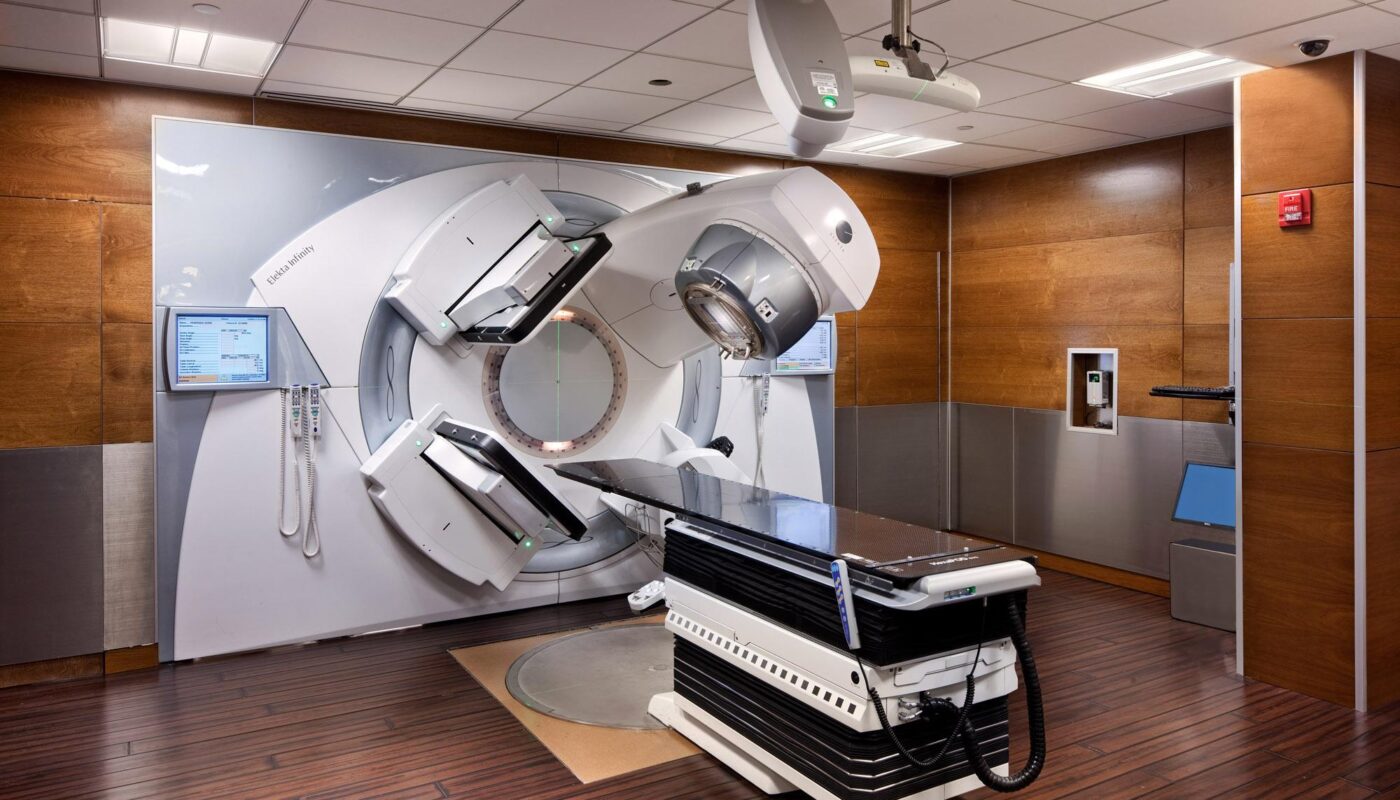Cancer is one of the leading causes of deaths worldwide. Radiation therapy has proved to be an effective treatment option for various types of cancer. Linear accelerators are the most commonly used radiation therapy devices that help deliver high-energy radiation precisely to cancer tumors. In this article, we will discuss the working and advances of linear accelerators and how they are improving cancer treatment outcomes.
What is a Linear Accelerator?
A linear accelerator or linac is a device that uses high frequency radio waves to accelerate charged particles (electrons) to high energies in a linear path inside a tube like structure called accelerator waveguide. As electrons collide with a heavy metal target like tungsten, high-energy x-ray radiation is produced. These x-rays are then carefully shaped and targeted to the tumor volume using a multi-leaf collimator.
Advanced capabilities of linear accelerators
Modern linear accelerators are equipped with advanced capabilities that allow for more precise and effective radiation delivery:
– Image guidance: Linear accelerators are integrated with CT scanners and onboard imaging cameras. This allows real-time verification of tumor position before and during treatment. Any tumor movement is tracked and addressed.
– Intensity modulated radiation therapy (IMRT): Using IMRT capability, linear accelerators can deliver non-uniform radiation doses by modulating beam intensities. This improves target conformity and allows escalated doses to the tumor while minimizing doses to surrounding healthy tissues.
– Volumetric modulated arc therapy (VMAT): VMAT allows continuous rotation of the gantry while simultaneously modifying multileaf collimator positions and dose rates. This significantly reduces treatment time while achieving IMRT-like dose distributions.
– Stereotactic radiosurgery/radiotherapy (SRS/SRT): Using SRS/SRT, very high but localized radiation doses can be delivered to small tumors in fewer treatment fractions compared to conventional radiation therapy. This requires sub-millimeter accuracy achievable with modern linacs.
– Particle therapy: Some advanced Linear Accelerators for Radiation for Radiation can accelerate protons/ions instead of electrons to produce therapy particle beams. This provides better dose distribution and increased tumor control relative to photon radiotherapy.
Improving cancer treatment outcomes
Integration of these advanced capabilities in linear accelerators has significantly improved outcomes for various cancers:
Head and neck cancers: IMRT and VMAT allow safe dose escalation to tumors while minimizing xerostomia compared to 3D conformal radiation therapy. 5-year local control rates are much higher.
Prostate cancer: Image-guided IMRT precisely delivers the prescribed dose to the prostate and seminal vesicles while avoiding nearby organs. This has reduced gastrointestinal toxicities and improved biochemical relapse-free survival.
Lung cancer: Dose escalation using SBRT and tracking tumor motion has resulted in excellent 3-year local control of 90-95% for early-stage non-small cell lung cancer. Survival benefits are also seen.
Breast cancer: Forward planned IMRT and inverse planned VMAT significantly reduce heart and lung doses compared to conventional techniques in left-sided breast cancers. This decreases cardiovascular and pulmonary complications.
Brain metastases: SRS provides definitive treatment with 1-5 fraction treatment to multiple brain metastases. Long-term local control and overall survival outcomes approach those of whole-brain radiation therapy.
Benefits for patients
With better targeting abilities and advanced treatment techniques, linear accelerators provide several benefits to cancer patients:
– Shorter treatment times ranging from a few minutes up to 30 minutes compared to several weeks of external beam radiation therapy. This reduces inconvenience.
– Minimized acute and long-term side effects on normal tissues owing to highly conformal dose distributions. This improves quality of life.
– Possibility of higher and more ablative radiation doses to tumors using techniques like SRS/SBRT. This translates to improved tumor control and survival.
– Non-invasive image guidance allows for verification of tumor location and movement during treatment. Any changes in tumor position or size can be addressed.
– Particle therapy holds potential for ultimate tumor targeting when integrated with advanced imaging and planning capabilities.
Continued technological advances in linear accelerators are enabling ever more precise and effective radiation therapies for various cancers. This offers great promise to significantly improve disease management and clinical outcomes for cancer patients worldwide. Linear accelerators will remain the mainstay of modern radiation oncology for years to come.
*Note:
1. Source: Coherent Market Insights, Public sources, Desk research
2. We have leveraged AI tools to mine information and compile it.



